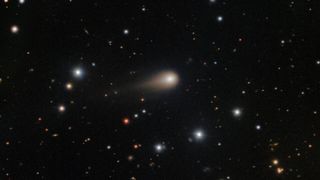
Harry Baker
Harry is a U.K.-based senior staff writer at Live Science. He studied marine biology at the University of Exeter before training to become a journalist. He covers a wide range of topics including space exploration, planetary science, space weather, climate change, animal behavior and paleontology. His recent work on the solar maximum won "best space submission" at the 2024 Aerospace Media Awards and was shortlisted in the "top scoop" category at the NCTJ Awards for Excellence in 2023. He also writes Live Science's weekly Earth from space series.
Latest articles by Harry Baker
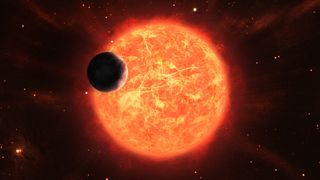
'Most pristine' star ever seen discovered at the Milky Way's edge — and could be a direct descendant of the universe's first stars
By Harry Baker published
Astronomers have discovered a surprisingly "pristine" red giant with the lowest concentration of heavy elements ever seen in a star. It is likely a direct descendant of one of the universe's first stars.
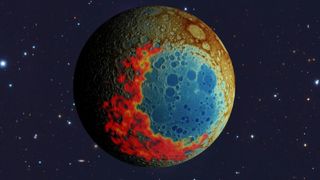
We were wrong about how the moon's largest and oldest crater formed — and that's great news for NASA's next lunar landing
By Harry Baker published
A new study has revealed that our understanding of the South Pole-Aitken basin was quite literally back-to-front, meaning astronauts on NASA's future Artemis III mission may be able to collect valuable samples of ancient radioactive material, known as KREEP.
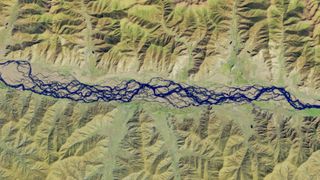
Shapeshifting 'braided river' in Tibet is the highest in the world, and is becoming increasingly unstable
By Harry Baker published
Earth from space A 2025 satellite photo shows a particularly complex section of the Yarlung Zangbo River as it twists its way through the Tibetan Plateau. This part of the "braided" waterway has experienced drastic visual changes over recent decades, which could soon be accentuated by climate change.

Live Science crossword puzzle #14: Fast dinosaur with a killer toe claw — 14 across
By Harry Baker published
Science crossword Test your knowledge on all things science with our weekly, free crossword puzzle!
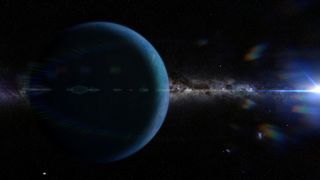
'Planet Y' theory hints at hidden Earth-size world lurking in the solar system — and it could be much closer to us than 'Planet Nine'
By Harry Baker published
A new study has proposed the existence of Planet Y, an alternative Planet Nine candidate that is smaller and closer to Earth than the hypothetical Planet X, which astronomers have been hunting for almost a decade. However, the evidence for this newly theorized world is "not definitive."
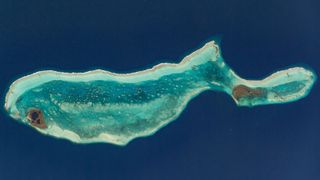
The whale-shaped island in Belize with a 'great blue blowhole'
By Harry Baker published
Earth from space This 2020 astronaut photo shows the unusual cetacean-like shape of Belize's Lighthouse Reef. It's home to the famous Great Blue Hole, which doubles as the island's "blowhole" when viewed from space.

Live Science crossword puzzle #13: Biggest country on Earth (by land area) — 7 down
By Harry Baker published
Science crossword Test your knowledge on all things science with our weekly, free crossword puzzle!
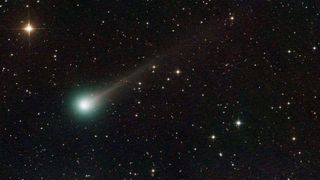
Newly discovered comet 'Lemmon' may be visible to the naked eye this month — but it will look more like a lime
By Harry Baker published
Comet Lemmon, discovered earlier this year, will make a close approach to Earth later this month, giving skywatchers the chance to see its surprising lime-green glow.
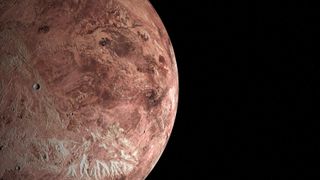
James Webb telescope spies a 'farting' dwarf planet with fluorescent gas in the outer solar system
By Harry Baker published
New observations suggest that the dwarf planet Makemake is surrounded by faintly glowing methane gas. Scientists are unsure if the gas is contained within a wispy atmosphere or being ejected into space.
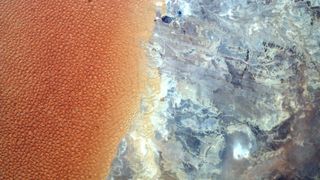
Sea of Saharan 'star dunes' clashes with otherworldly terrain where 2 countries meet
By Harry Baker published
Earth from space A 2017 satellite photo shows the stark contrast along the boundary between a giant field of golden "star dunes" and a barren rocky wilderness in the Sahara, which overlaps with an international border.

Live Science crossword puzzle #12: The heart of an atom — 6 down
By Harry Baker published
Science crossword Test your knowledge on all things science with our weekly, free crossword puzzle!
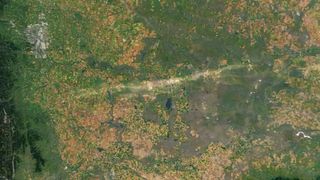
Extreme 'golf ball-size' hailstones carve 125-mile 'scar' in Canadian landscape
By Harry Baker published
Earth from space This 2025 satellite photo shows the aftermath of a devastating hailstorm in Alberta, Canada, which destroyed property, collapsed pylons and killed at least two animals.

Live Science crossword puzzle #11: Giant cloud at the edge of the solar system — 7 across
By Harry Baker published
Science crossword Test your knowledge on all things science with our weekly, free crossword puzzle!
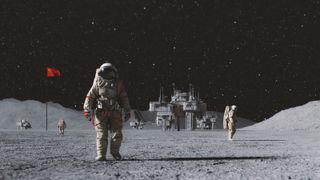
New report warns that China could overtake the US as top nation in space — and it could happen 'in 5-10 years,' expert claims
By Harry Baker published
A new report from the Commercial Space Federation warns that China could soon overtake the U.S. in the "new space race." The country's rapid progression starkly contrasts the limitations imposed on NASA by record-breaking budget cuts.

'The sun is slowly waking up': NASA warns that there may be more extreme space weather for decades to come
By Harry Baker published
A new NASA study suggests that solar activity will remain high or rise further in the coming decades, contradicting previous assumptions that the sun was quieting down — and scientists "don't completely understand" why.
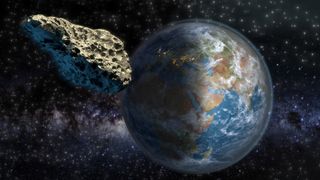
Skyscraper-size asteroid previously predicted to hit us in 60 years will zoom past Earth on Thursday (Sept. 18) — and you can see it live
By Harry Baker published
The "potentially hazardous" asteroid 2025 FA22 will fly close past Earth at more than 24,000 mph on Thursday (Sept. 18). The space rock was previously predicted to have a slim chance of impacting our planet in 2089, temporarily earning it the top spot on a major risk list.
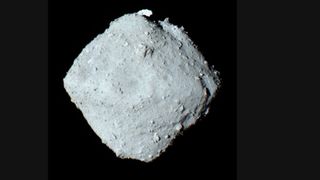
'A genuine surprise': Near-Earth asteroid Ryugu once had 'flowing water' that transformed its insides
By Harry Baker published
A new analysis of asteroid Ryugu hints that the "potentially hazardous" space rock once had flowing water in its core, possibly leftover from the impact that created it.
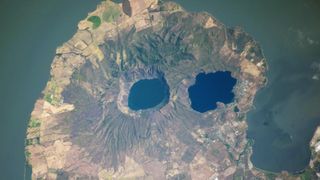
Volcanic 'googly eyes' stare into space from skull-like peninsula
By Harry Baker published
Earth from space A 2014 astronaut photo shows a pair of volcanic lakes appearing to stare up into space from the Chiltepe Peninsula of Nicaragua's Lake Managua. These "eyes" and "skull" were created by violent eruptions thousands of years ago.

Live Science crossword puzzle #10: Tallest volcano on Earth — 10 down
By Harry Baker published
Science crossword Test your knowledge on all things science with our weekly, free crossword puzzle!
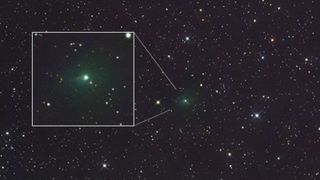
Interstellar comet 3I/ATLAS could be turning bright green, surprising new photos reveal
By Harry Baker published
New photos captured during the recent "blood moon" total lunar eclipse show that the interstellar comet 3I/ATLAS may be turning green as it gets closer to the sun.
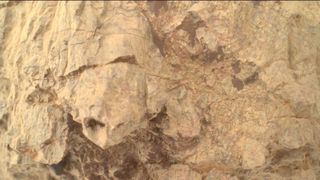
NASA spots bizarre 'turtle' on Mars
By Harry Baker published
NASA's Perseverance rover has photographed a peculiar rock formation that looks eerily like a turtle poking its head out from its protective shell.
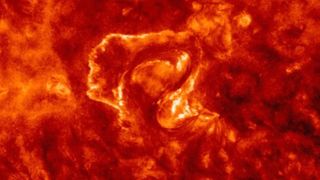
Gigantic 'letter S' spotted on the sun just before a 'dark eruption' hurls a fiery shadow at Earth
By Harry Baker published
A giant S-shape structure, around 10 times wider than Earth, recently appeared in the center of the sun, moments before our home star unleashed an even larger plume of plasma that later crashed into our planet.
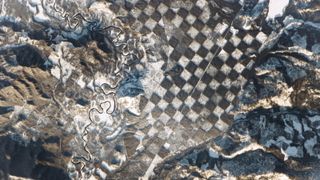
Giant 'chessboard' surrounds Idaho river in bizarre astronaut photo
By Harry Baker published
Earth from space A 2017 astronaut photo shows an unusual checkered pattern surrounding a river, just south of the Canadian border. The unique sight is the result of a forest management initiative dating to the 1800s.
Get the world’s most fascinating discoveries delivered straight to your inbox.
